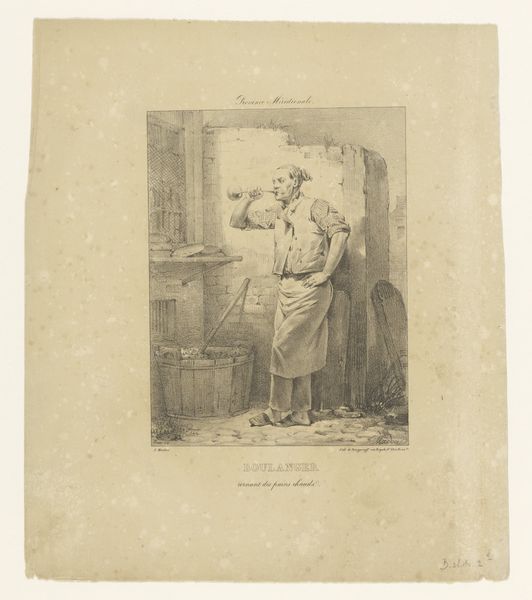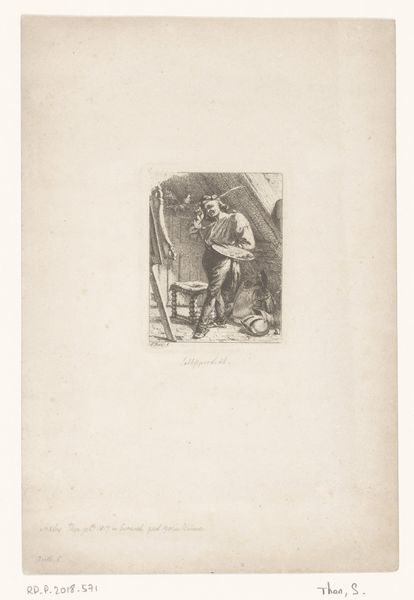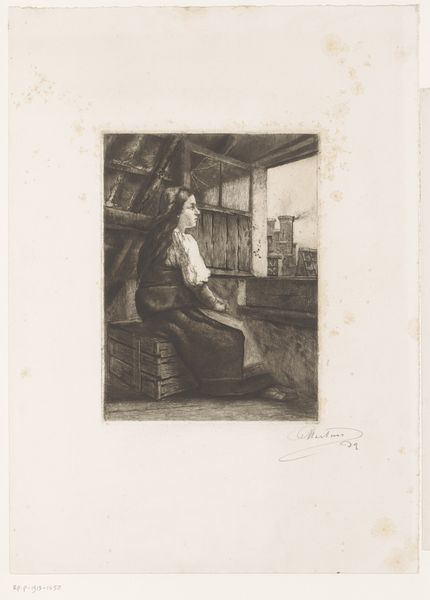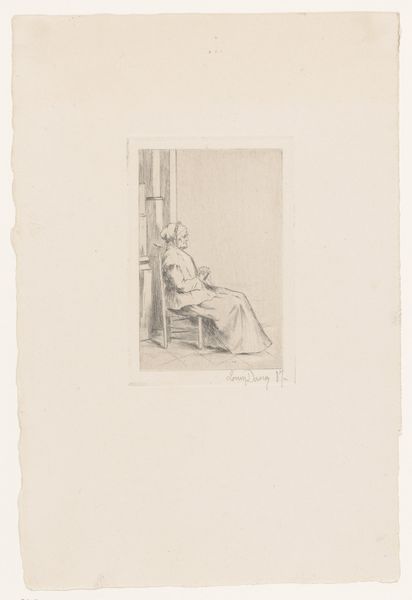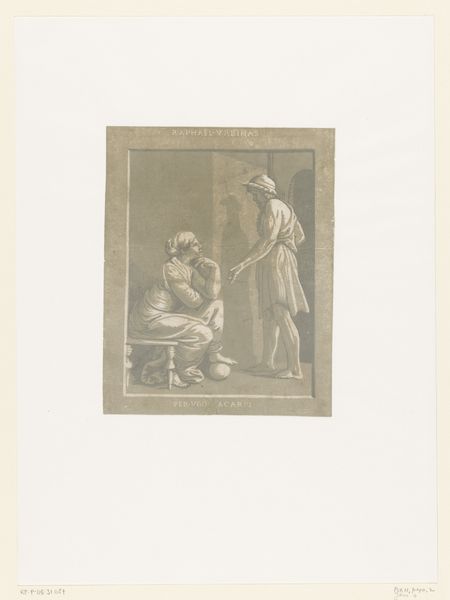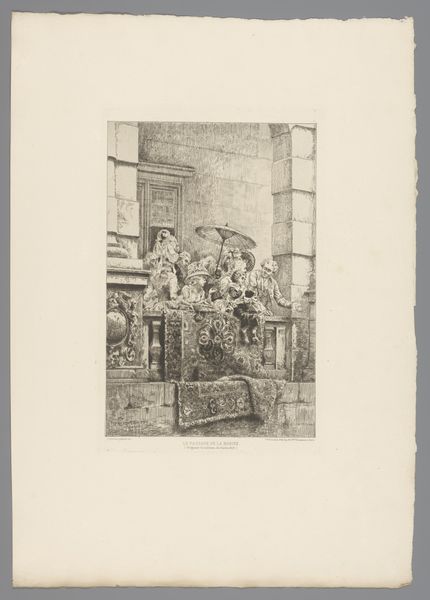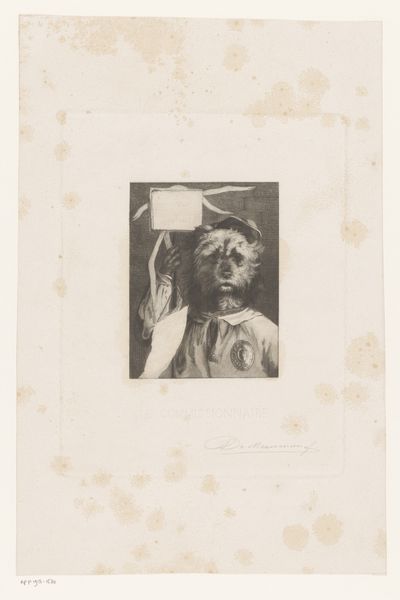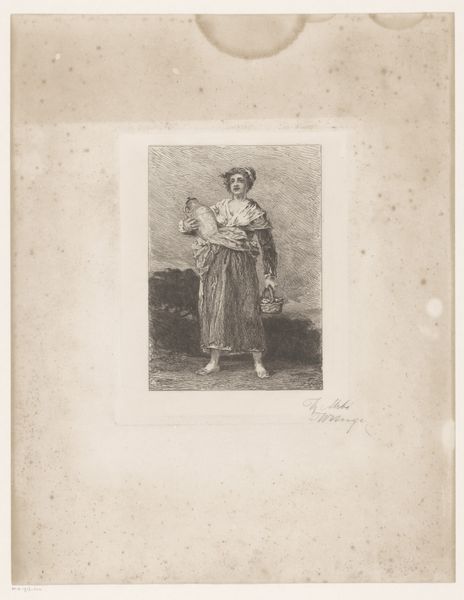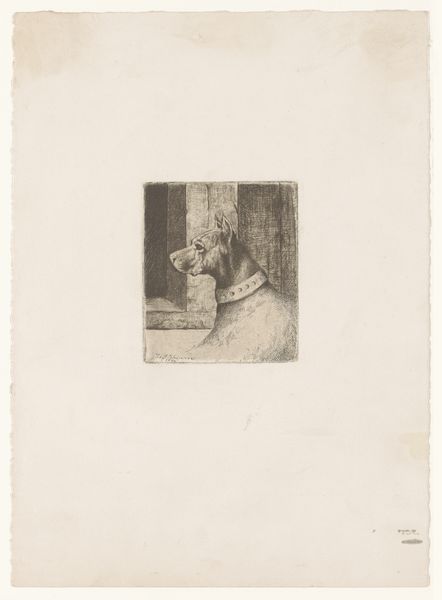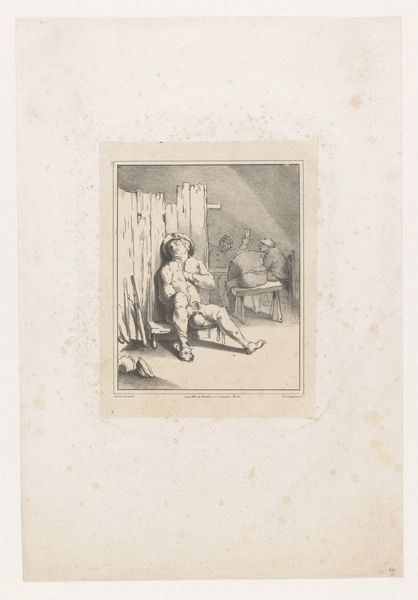
print, etching
#
narrative-art
# print
#
etching
#
figuration
#
romanticism
#
genre-painting
Dimensions: height 349 mm, width 270 mm
Copyright: Rijks Museum: Open Domain
Curator: Jean-Baptiste Madou created this etching, “Twee vrouwen bij een wastobbe” or "Two Women at a Washtub" between 1825 and 1835. It is currently held here at the Rijksmuseum. Editor: The overall impression is one of contained domesticity. The monochromatic etching highlights the stark realities of labor within the home, casting the central figure in a light that is both burdened and dignified. Curator: It's important to consider the rise of Romanticism during this period. We see a turn toward depicting everyday life, elevating the stories of common people, which had often been marginalized in the grand narratives of history painting. These women were not queens or mythological figures. They represent a vital, often invisible workforce. Editor: I agree. The washtub itself functions as a compelling symbol. It suggests purification and renewal. We also observe the communal labor of women. One is scrubbing laundry and another helps place the finished work in a basket, possibly a sign of resilience in shared responsibilities, a network of female support that history often overlooks. Curator: Absolutely. The romantic style of this piece often overlooks some critical social inequalities. These genre paintings, while celebrating ordinary people, can also sanitize or romanticize the harsh conditions they face. Looking closely at clothing, at how these women occupy a small space together is significant when you think about 19th-century work, class, gender and living arrangements. Editor: Also note how the artist subtly guides our eye: her gaze looking directly outward seems to pull us into the reality of their labor, to be witnesses. Curator: I found that viewing this etching gave a richer understanding of social hierarchies as they played out in private life and the history behind labor organization and representation. Editor: The quiet strength of this image makes me want to continue researching the evolution of these symbols. Its layered meaning transcends mere depiction.
Comments
No comments
Be the first to comment and join the conversation on the ultimate creative platform.

